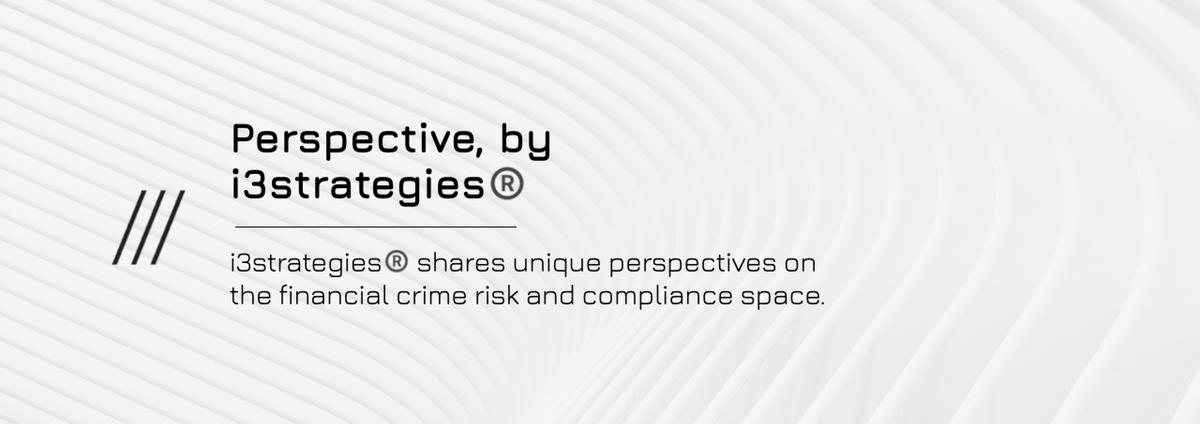How to Buy FinCrime Compliance Software

Selling and buying Financial Crime Compliance software feels like a weird combination of hide & seek and Clue. Both sides keep information from the other, and the whole thing feels like trying to solve a mystery.
What can buyers do to make the selling process better?
The burden to sell is still on sellers. But buyers need something from a transaction. Otherwise, there is no sale, just wasted time, effort, and emotion. This process should work better for both.
It's normal for buyers to complain about sellers. We are not writing this to give sellers cover for lousy selling. We're writing this to help buyers get what they want from buying with less stress and fewer headaches.
Selling FinCrime Compliance Software Is Tough
Before diving into the sales process, picture what it is like to sell FinCrime Compliance software. Seeing things from the seller's perspective helps make buyers better buyers.
FinCrime software sellers, like salespeople everywhere, have sales goals to meet. This is not good or bad; it is just the fundamental element of a sales career. Goals, or sales targets, motivate sellers and cause tension, stress, and pressure. A seller's income and job future depend on their ability to sell. Most FinCrime Compliance buyers do not come from a "sell side" business. There is nothing wrong with this, of course, but buyers benefit from knowing sellers' intrinsic motivations and fears and how these are at work during the sales process.
Selling FinCrime Compliance Software is Competitive
The FinCrime Compliance software marketplace is growing. Estimates put the annual spending on FinCrime technology well into the billions. As big as "billions of dollars" sounds, FinCrime Compliance software is a competitive market. Finding buyers is a challenge. While every regulated organization needs software, only a small number of those institutions buy at any one moment. In addition, sales cycles (the time it takes to first see a product to the time it takes to sign contracts) take months, and in some cases, large purchases take well over a year.
To find deals in this market, sellers must seek new prospects. Remember, the sellers do not know which potential buyers are buying this year. To find buyers, they try different ways to get a prospect's attention, including emails, LinkedIn messaging, marketing, cold calling, attending trade shows, and sponsoring local events. To buyers, this can be annoying. "Why are sellers barraging me with messages every day when I don't care what they are selling, and I'm not buying?"
In cases like this, buyers make your life (and the seller's life) easier by telling the seller you are not in the market for a new screening, monitoring, KYC, or whatever system. Respond that you understand they are looking for potential buyers, but you are not one. A good seller should appreciate this, express that appreciation, and ask if it's okay to follow up next year. That should be the end of it, at least with this seller.
If, instead, you do not respond to emails, phone calls, or LinkedIn messages, expect the seller to keep trying. Sellers know it takes anywhere from six to ten attempts for a prospect to engage, even if that engagement is "leave me alone." They won't be upset if, after one or two messages, you let them know you are not interested. In fact, "no" is the second best answer a seller hears. This saves you from being annoyed and them from wasting time.
Are buyers interested in buying?
There are various ways to define "interested in buying." For some FinCrime Compliance executives, "buying" means "window shopping" to see what new applications are in the market. Window shopping lets executives know what is new and helps them figure out if their program remains comfortably in the pack with its peers.
Other buyers want to see what is available but have yet to secure a budget or approval for new systems. They want to learn what is in the market, what it costs, and if it solves their problem before they kick off a time-consuming and stressful approval and budgeting process.
Other buyers have the budget approved and are at the point where they will buy if they find the right solution.
Buyers make the sales process smoother if they tell sellers which of these three stages they are in the buying process. Good sellers are okay if a seller is "just looking." Good sellers know that some sales take longer than others, and most initial opportunities don't end with a deal. That is part of the game. Batting .100 or .200 in FinCrime sales is an MVP season.
Telling a seller that you do not have buying authorization or budget at the moment relieves the mystery and stress from the initial meeting and demonstration. The seller is relaxed, and so is the buyer. This leads to better conversations and, who knows, a sale, perhaps.
In the other two scenarios, where a buyer needs to buy but does not yet have the budget or where the buyer has a budget allocated, telling sellers this makes the sales cycle much better. When sellers know there is a need to buy and that a buyer will make a decision soon (and by soon, that can be in the next six to nine months), a good seller is switched on.
Having Good Seller and Buyer Meetings
Good sellers follow a process and its starts with asking questions. There are different approaches to questions, and most progress through these stages: Discovery questions help the seller understand the process and systems the buyer uses and what motivates the buyer to explore new software. Needs questions seek to understand a buyer's requirements for new software—the functionality and outcomes it must deliver. Closing questions gauge the seriousness of the buyer and the likelihood of a deal.
There are variations of these approaches, but the main point is that good sellers ask good questions, and good buyers provide answers and engage in meaningful discussion. Sales meetings fail if just the seller is talking. Granted, many sellers sometimes forget this and monopolize meetings spewing non-stop about their product without asking what a buyer cares about.
Sales meetings work better when buyers are clear about the issues they need fixed and share the problems they are trying to solve with as much detail as possible. This focuses a sales conversation on what matters most to the buyer (their problems) and focuses the seller on communicating how their product solves those problems.
Buyers, Ask Questions
Buyers should ask sellers about possible additional costs associated with buying their product. Is a third party needed for implementation, or is additional software or hardware required? If it's a SaaS application, are there other costs needed? Once implemented or subscribed to, what ongoing support must the buyer provide? Do we need to hire system administrators or other support personnel?
Buying decisions typically require more than one decision-maker. Ultimately, the FinCrime Compliance officer decides, but they will want input from others, including their management team and users. Bring these people to the sales meetings. Have them listen to the salesperson and then ask questions from their perspective. How much training does it take to get the team ramped up? What work processes will this new software change? Will it change job roles and responsibilities?
Share Your Buying History
Many FinCrime Compliance buyers have had bad experiences where they felt manipulated or fooled by a prior technology purchase. Their frustration may have come from misunderstanding everything involved in implementing complex software. Regardless of why a previous purchase was negative, buyers should share this history with the seller. Sellers can now share why buying their product will not be a similar bad experience. Of course, a salesperson's word is not a guarantee, but discussing a buyer's concern gets issues in the open.
Buying Decisions
Sellers want to understand the buyer's decision-making process. Some buyers would prefer to keep this information private, thinking it gives away negotiating leverage. But keeping the decision-making process a mystery adds to a seller's tension and stress. As a result, sellers may send too many "checking in" or "what's up" emails, texts, and voicemails, to buyers looking for "an update." This is annoying.
Buyers should be as informative about the decision-making process as possible. Tell the sellers what decision criteria are "must haves' and which are "nice to haves." Share the decision-making timeline. It's okay to give ranges of time here but offer some detail. Also, share an overview of your organization's vendor onboarding and contracting process. Again, no need at this point to give away the names and email addresses of everyone involved, but provide an overview.
When doing this, buyers and sellers should agree on a communication schedule until a decision is made. Sellers put in a lot of work preparing for meetings, crafting demonstrations, formulating good questions, and staying engaged with buyers. If each side understands the efforts of the other, the process goes smoother than if everyone is guessing about time frames.
Talking Money
No sale happens without agreeing on a price. It is no surprise that every seller, when finding a potential buyer, begins thinking about price. Sellers have sales targets to meet. While sellers believe in the product they sell and enjoy their work, all that is secondary to money. Sellers have no idea what buyers are thinking when it comes to price. What can buyers do to help the pricing discussion, remove the mystery, get a price they accept, and keep the seller interested? Ask questions.
Depending on the product, some pricing discussions are fast and easy. For example, if a buyer needs software where the price is set per user, ask the seller the range of prices per user. By asking for a range, it gives the seller a feeling that they can still negotiate, but it also anchors a number. In situations like this, it helps both sides realize there is no workable solution. For example, if a buyer has a budget of $2,000 per user and the seller says it's $7,000 per user, this saves everyone time.
For products not priced per individual user, buyers should ask a seller about the pricing method. For example, is the price based on usage numbers (standard for screening applications), or is it based on the asset size of the buyer or some other characteristic?
Buyers can ask, "For customers like us, what is the price range of deals you've closed in the past year?" This gives the seller some negotiating room while helping both sides determine if a deal is possible.
Some buyers may decide that asking directly for exact pricing is a better approach. It may be, but in these cases, buyers should expect sellers to ask what amount the buyer has budgeted. This is just one of the inevitabilities of negotiating - who shows their cards first.
Selling and buying create discomfort and stress. So much so, a company like CarMax is successful in part because they eliminate this discomfort. Buying FinCrime Compliance software is hopefully a better experience than dealing with a pushy car salesperson, but it still evokes similar negative feelings for many buyers.
Much of the discomfort is caused by the lack of clear communication between buyer and seller. The clearer a buyer is about the problem they are seeking to solve, product requirements, and their decision-making process, the clearer a seller can be about their product and price. Remove the mystery, and this removes some of the stress. No product is right for every buyer, and no buyer is right for every seller. But by following the suggestions we present here, the buying experience will be better.
